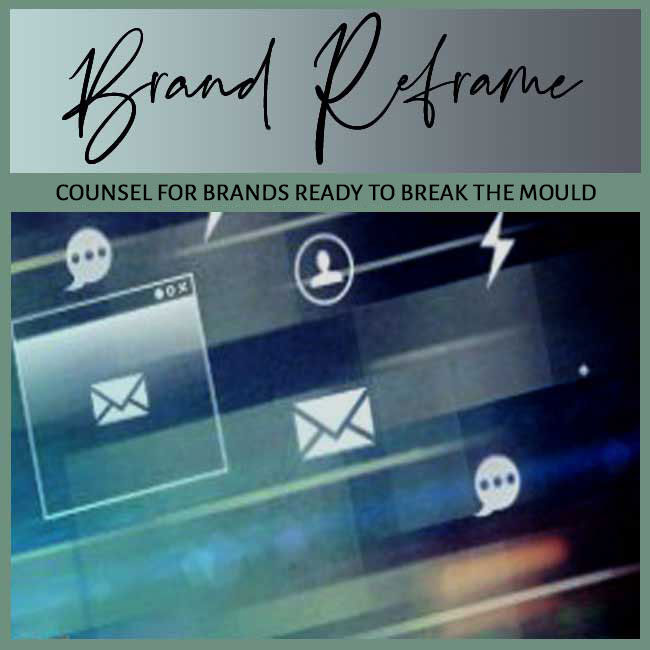
BY: SHOBHA PONNAPPA | BRAND BREAKTHROUGH STRATEGIST | 45 YEARS | 125+ CLIENTS
Brand focus is the discipline of concentrating your brand’s energy on its most essential promise, audience, and positioning. It’s about making deliberate choices on what you stand for and resisting the temptation to be everything to everyone. Focus creates clarity for customers, alignment for teams, and distinction in crowded markets. Without it, brands easily lose coherence, spreading themselves thin and diluting their impact.
In my work with brands at critical crossroads, I’ve found that focus is less about cutting options and more about sharpening direction. It creates guardrails that channel creativity and investment where they matter most. When brand focus is strong, every touchpoint reinforces the same essence, making the brand easy to recognise and trust. When it’s weak, even large budgets can’t prevent the brand from being overlooked or misunderstood.
In an environment of information overload and constant competition, unfocused brands quickly fade into background noise. Customers make fast judgments and rarely give second chances to brands that appear scattered or unclear. Focus helps them “get” your brand instantly, which builds confidence and trust at speed. A brand with focus saves customers time and effort, which is one of the greatest modern differentiators.
Historically, a brand could afford some sprawl because fewer channels diluted visibility less. But now, inconsistency is magnified across social feeds, websites, and reviews, where contradictions are noticed immediately. Focus creates a throughline that makes the brand feel dependable, regardless of platform or format. Without focus, marketing turns into noise, and strategy becomes reactionary rather than purposeful.
Positioning defines the unique space you claim in the market. Focus requires being explicit about who you serve, what you offer, and why you’re the best choice. A clear position lets audiences categorise your brand quickly in their minds, which is essential for trust and memorability. Without sharp positioning, customers struggle to see the difference between you and competitors.
Focused positioning also makes resource allocation easier because priorities become obvious. Teams know which opportunities to pursue and which to decline, saving both time and money. The sharper the position, the more naturally customers refer others with a clear description of your value. This clarity compounds into stronger reputation and market pull.
Focus thrives when you know exactly who your brand is for. Defining an audience means choosing the people you want to serve most deeply, not trying to appeal to every possible segment. The more precise the audience, the easier it is to craft messages and experiences that resonate strongly. Generalised brands risk being relevant to none.
Having a defined audience also makes innovation more targeted and effective. Products and campaigns are built for real needs instead of hypothetical averages. Teams gain empathy and insight by concentrating on the same audience lens across decisions. Over time, this builds loyalty, because customers feel truly seen and understood.
Brand focus is expressed through messaging that consistently reinforces the same promise and personality. Disciplined messaging avoids chasing trends or scattering across too many themes. Instead, it chooses a few key ideas and repeats them with fresh energy across platforms. This repetition cements the brand’s meaning in customer memory.
Disciplined messaging doesn’t mean boring or rigid … it means coherent. It allows creativity to flourish within boundaries that strengthen recognition rather than confuse it. Over time, disciplined messaging becomes shorthand for the brand’s credibility. Audiences then associate the brand with authority and reliability in its chosen space.
Focus must be visible not only in words but in the entire customer journey. Every touchpoint … from product design to service interactions … should feel like it belongs to the same brand. Coherence creates trust, because customers experience the brand consistently wherever they encounter it. A fragmented experience weakens even the strongest strategy.
Coherent experiences also make scale easier. New channels, products, or markets can be added without losing identity, because the same focused essence flows through everything. Internal teams benefit too, as they can align around shared standards. Ultimately, coherence ensures focus is lived, not just declared.
For a new brand, focus begins with tough but necessary choices. Define what your brand will not do as clearly as what it will do. Narrowing the field early prevents distraction and helps establish a strong identity fast. Clarity of intent becomes a magnet for customers who want what you specialise in.
Focus also helps start-ups conserve resources. By concentrating marketing, hiring, and product development around a clear promise, they build depth instead of shallow reach. This creates momentum that grows naturally, rather than sporadically. Brands that start with focus are far less likely to drift when competition heats up.
As brands mature, the temptation to broaden often increases. New markets, customer requests, and investor pressures can push brands toward dilution. Sustaining focus requires discipline to grow in ways that reinforce identity rather than weaken it. Expansion should magnify strengths, not scatter them.
Regular reviews help sustain focus. Leaders should ask whether every new initiative aligns with the brand’s core positioning and promise. If not, it risks becoming noise that distracts more than it delivers. Brands that sustain focus over decades build reputations that survive shifts in culture and technology.
One pitfall is “opportunity chasing,” where brands dilute themselves by saying yes to every request. This leads to confused messaging and inconsistent offerings. Another pitfall is excessive diversification without coherence, making the brand seem opportunistic rather than trustworthy. Both mistakes erode identity and weaken loyalty.
A subtler pitfall is mistaking internal busyness for external clarity. Teams may feel productive launching many initiatives, but customers only see a muddled brand. True focus requires discipline to prioritise what matters most externally, not just activity for its own sake. Without this, even well-resourced brands lose traction.
This fintech initially targeted both businesses and consumers but lacked traction. By focusing solely on small businesses, on my advice, it sharpened features, messaging, and support. Customers responded with stronger loyalty, and adoption rates grew rapidly. Focus turned a scattered experiment into a trusted, scalable solution.
A mid-sized retailer tried to cater to every category but struggled with margins. By focusing on sustainable home essentials, I helped it clarify its inventory, storytelling, and positioning. The narrowed scope drew in more loyal buyers and reduced operational strain. The brand soon became synonymous with “eco-smart living,” gaining cultural momentum.
A clinic offered a wide range of services but had weak recognition. I advised the narrowing of focus to women’s wellness, and it restructured its identity and messaging. Patients now saw it as an authority in a specific field, which lifted referrals and partnerships. Focus transformed general competence into trusted expertise.
The platform marketed itself with dozens of use cases, overwhelming prospects. By focusing on three core benefits … speed, integration, and security … it simplified its pitch. I ensured this disciplined messaging resonated with decision-makers who valued clarity. Sales cycles shortened, and the brand earned stronger industry credibility.
The brand had diluted itself with too many product variations. By helping it refocus on its original strength … authentic recipes with natural ingredients … I helped rebuild its reputation. Loyalists returned, and new customers discovered the refreshed clarity. Focus restored the heritage brand’s authority and trust in a crowded category.
The NGO spread itself across multiple causes, which confused donors. I advised focusing only on child nutrition, to sharpen its programs and communications. Donor confidence grew because impact was easier to measure and explain. Focus created coherence, which multiplied funding and volunteer engagement.
Clarity ensures your brand is understood; focus ensures your brand is disciplined about where it applies its clarity. They work together but are distinct. A brand can be clear yet scattered if it tries to be relevant in too many areas. Focus turns clarity into strategy by guiding deliberate choices.
If customers struggle to describe you, or if teams launch initiatives that don’t connect, focus is weakening. Another sign is when marketing spends increase but loyalty doesn’t, because efforts feel inconsistent. Investor or partner feedback may also highlight lack of direction. These are red flags that demand correction.
Absolutely … small brands benefit the most from focus. Limited resources mean they cannot afford dilution. By being sharp about what they do best, they win disproportionate trust in their niche. Focus helps them compete effectively against larger, more diffuse rivals.
Focus provides boundaries that spark better creativity. Instead of spreading ideas thin, it forces innovation within meaningful constraints. This creates more impactful campaigns, products, and experiences. Creativity guided by focus tends to resonate more deeply with audiences.
As brands expand, focus must be intentionally protected. Leaders should measure new opportunities against the brand’s core promise and decline those that dilute identity. Regular strategic reviews help prevent drift. Growth aligned with focus compounds strength, while unfocused growth leads to fragility.
Yes, but it requires discipline. Brands must revisit their purpose, audience, and positioning, and then cut away distracting initiatives. Communicating the renewed focus internally and externally rebuilds trust. With consistency, even a scattered brand can realign and thrive.
Explore Brand Drift Problems … Real Cases & Fixes
Case Studies
FAQ Insights

"One BIG IDEA can turn brand stagnation into unstoppable movement. Spots are limited each week ... book your breakthrough session now."
Shobha Ponnappa
My Definitive Guides to Other Critical Branding Concepts
Smart insights, real-world frameworks, and idea-driven clarity – designed to help brands move.
Get my fortnightly Brand Reframe newsletter. Smart insights, distilled thinking, and focused momentum to help your brand lead.

Get my free AI strategy guide. Smart prompts, sharper briefs, and practical ways to make AI support your brand momentum.

Just fill in the form to join. Get my newsletter and the guide shown alongside, all with several game-changing tips.